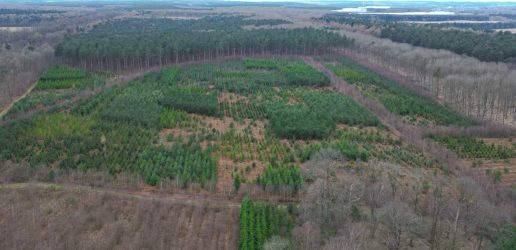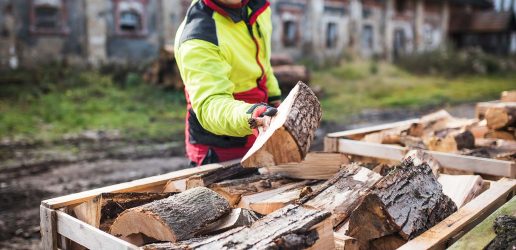Report sees a softening of the non-firewood hardwood timber market in 2024 as prices weakened slightly.
Forest Research, in collaboration with Grown in Britain, has published the Hardwood Price-size Curves report for the 2024 Calendar Year.
The report presents updated price‑size curves for UK-grown hardwood species during the 2024 calendar year. It builds on methodologies used in previous editions, combining survey data and expert judgment—particularly from Graham Taylor, a seasoned timber market expert—to estimate standing sale prices (£/m³) across varying tree sizes for ash, beech, cherry, lime, oak, poplar, sweet chestnut and sycamore.
The report notes that there was generally a softening of the non-firewood hardwood timber market in 2024 as prices weakened slightly.
Gregory Valatin, Principal Economist at Forest Research said on the findings: “In most cases there appears to have been a marked fall in hardwood timber prices in the second half of the year, reducing the overall average for the year, with many of the higher grades of ash, sycamore, and sweet chestnut having lower prices than those in 2022 to 2023. Oak appears to have been an exception to this with higher prices in 2024 than in the previous years.”
He continued: “Firewood prices also appear to have remained high throughout 2024, with material for the firewood and biomass markets continuing to be in demand. Prices seemed to have stabilised compared to the increases seen between 2022 and 2023.”
Dougal Driver, CEO, Grown in Britain said: “For many landowners, the timber value of their trees remains unclear, and this uncertainty often leads to woodlands being left unmanaged.
“Grown in Britain believes by researching and publishing current average prices, better-informed landowners will actively manage their woods. This results in increased homegrown timber for sawmills, enhanced biodiversity, and reduced reliance on unnecessary imports.”
The report was funded by the UK Government through Defra’s Nature for Climate Fund programme.
Read the full report: Hardwood Price-size Curves
Recent News
View All news
Seventeen coniferous tree species show early promise for future commercial timber production in the UK
Researchers have set up a network of nine large scale experiments across the UK to test the suitability of 17 tree species as potential alternatives for future commercial timber production.
Forest Research are looking for people involved in the harvesting, processing, transport, import, or trade of firewood in Scotland to complete an important survey.

New guide to help local authorities conduct a people survey on the social value of their treescapes
A new step-by-step guide to help local authorities, charities and civic societies carry out a people survey to understand social and cultural values related to trees in their area, is now available.

Seventeen coniferous tree species show early promise for future commercial timber production in the UK
Researchers have set up a network of nine large scale experiments across the UK to test the suitability of 17 tree species as potential alternatives for future commercial timber production.
Forest Research are looking for people involved in the harvesting, processing, transport, import, or trade of firewood in Scotland to complete an important survey.

New guide to help local authorities conduct a people survey on the social value of their treescapes
A new step-by-step guide to help local authorities, charities and civic societies carry out a people survey to understand social and cultural values related to trees in their area, is now available.

